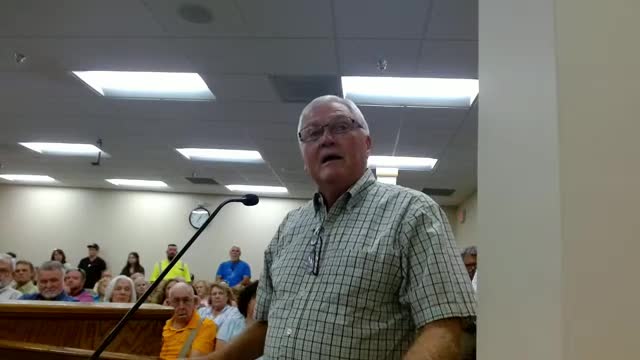Residents Rally Against Dangerous Truck Traffic Development
August 22, 2024 | Spalding County, Georgia
This article was created by AI summarizing key points discussed. AI makes mistakes, so for full details and context, please refer to the video of the full meeting. Please report any errors so we can fix them. Report an error »

Residents of Williamson, Georgia, voiced strong opposition during a recent government meeting regarding a proposed rezoning that could lead to increased truck traffic and commercial development in their community. Concerns were raised about safety, noise, and the preservation of the area's rural character.
Several residents, including local homeowners, expressed their fears about the dangers posed by heavy dump truck traffic on Borland Road, where speeds reportedly reach up to 70 miles per hour. One resident recounted a personal experience of having to be vigilant while checking their mailbox due to the frequent passage of dump trucks, emphasizing the potential risks to families and children in the area.
Lori Jester, a resident who moved to the area for its tranquility, highlighted the community's desire to maintain its peaceful environment, opposing the introduction of more commercial establishments like convenience stores. Virginia Langford echoed these sentiments, sharing her experiences with increased traffic and safety issues near her aunt's home, which is located close to existing commercial developments.
Cedric Randolph, a long-time resident, warned that the proposed changes could exacerbate traffic problems, particularly at intersections that are not designed to handle additional truck traffic. He urged the commission to consider the long-term implications of rezoning, advocating instead for residential development that aligns with the community's rural identity.
Dale Shaw, another local resident, cautioned that approving the rezoning could lead to further commercial encroachment, transforming the area into a more urban environment reminiscent of nearby counties. He called for the preservation of Williamson's rural character, appealing to the commission to reject the proposal.
The meeting underscored a collective desire among residents to protect their community from the impacts of increased commercial development and heavy truck traffic, reflecting broader concerns about maintaining quality of life in rural areas facing growth pressures.
Several residents, including local homeowners, expressed their fears about the dangers posed by heavy dump truck traffic on Borland Road, where speeds reportedly reach up to 70 miles per hour. One resident recounted a personal experience of having to be vigilant while checking their mailbox due to the frequent passage of dump trucks, emphasizing the potential risks to families and children in the area.
Lori Jester, a resident who moved to the area for its tranquility, highlighted the community's desire to maintain its peaceful environment, opposing the introduction of more commercial establishments like convenience stores. Virginia Langford echoed these sentiments, sharing her experiences with increased traffic and safety issues near her aunt's home, which is located close to existing commercial developments.
Cedric Randolph, a long-time resident, warned that the proposed changes could exacerbate traffic problems, particularly at intersections that are not designed to handle additional truck traffic. He urged the commission to consider the long-term implications of rezoning, advocating instead for residential development that aligns with the community's rural identity.
Dale Shaw, another local resident, cautioned that approving the rezoning could lead to further commercial encroachment, transforming the area into a more urban environment reminiscent of nearby counties. He called for the preservation of Williamson's rural character, appealing to the commission to reject the proposal.
The meeting underscored a collective desire among residents to protect their community from the impacts of increased commercial development and heavy truck traffic, reflecting broader concerns about maintaining quality of life in rural areas facing growth pressures.
View full meeting
This article is based on a recent meeting—watch the full video and explore the complete transcript for deeper insights into the discussion.
View full meeting
